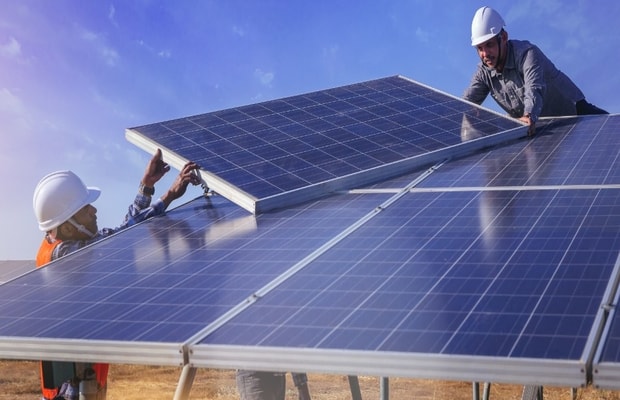

The Institute for Energy Economics and Financial Analysis (IEEFA) in a new report has detailed that despite the devastating impact of the COVID-19 pandemic, during the months of April and May, renewable energy continued to break records. And at the helm of it was solar, as costs continued to decline thanks to dramatic falls in the two most important inputs in capital cost of solar (driven by a 20 percent fall in solar module costs in the last year) and dramatic falls in the cost of funding.
The report “Renewables Continue to Break Records Despite COVID-19 Impacts” goes on to add that in April, the Emirates Water and Electricity Company (EWEC) awarded a 1.5 gigawatt (GW) solar tender to French energy group EDF and Chinese solar company JinkoPower. The consortium offered USD 13.50/MWh for the power generated at Al Dhafra, Abu Dhabi. This result was 13 percent below a January 800 megawatt (MW) solar award by the Qatar General Electricity and Water Corp (Kahramaa) at a then-record low of USD 15.60/MWh to Total and Marubeni Corporation.
Author Tim Buckley, IEEFA’s director of energy finance studies said one of the most relevant impacts of COVID-19 has been the collapse of interest rates in global developed markets collapse.
“For solar, the tariff required is a direct function of the solar resource, the capital cost of installation, and the required rate of return for debt,’ said Buckley. “With dramatic falls in the capital cost of solar (driven by a 20 percent fall in solar module costs in the last year) and dramatic falls in the cost of funding, the two most important inputs into the solar tariff have fallen hugely relative to even two years ago.”
The report goes on to detail that the months of April and May saw developments in a number of major renewable energy projects. These range from California awarding seven projects totaling 770 MW of battery storage to Siemens Gamesa announcing its launch of a new record 14 MW offshore wind turbine, for commercial deployment in 2024.
As renewable and battery costs continue to decline, IEEFA foresees increased stranded thermal asset risks.
Unsurprisingly, available capital has continued to restrict, with six new or tightened coal exit policies announced by globally significant financial institutions over April to May, taking 2020 to-date tally to 37 announcements. Additionally, BlackRock completed its thermal coal miner divestment in May 2020 and put KEPCO on notice over the inconsistency of the Korean utility retaining plans to invest in new coal power plants.
‘Despite, or maybe in acknowledgment of, the global pandemic, April and May 2020 have seen global momentum toward energy transition continue apace,” concluded Buckley.
Source: saurenergy.com
Houston headquartered Syzygy Plasmonics has announced the beginning of Front-End Engineering and Design (FEED) with…
State owned THDC India Limited (THDCIL) has announced the successful commencement of COD process of…
The Uttar Pradesh government is preparing to launch the Uttar Pradesh Sustainable Aviation Fuel (SAF)…
India’s cooperative sugar industry is urging the government to revise ethanol procurement prices and extend…
The Indian Biogas Association (IBA) has announced a key step taken to boost biofuels sector…
In a key development that would bolster the development of green hydrogen in the North…